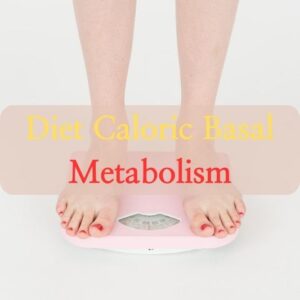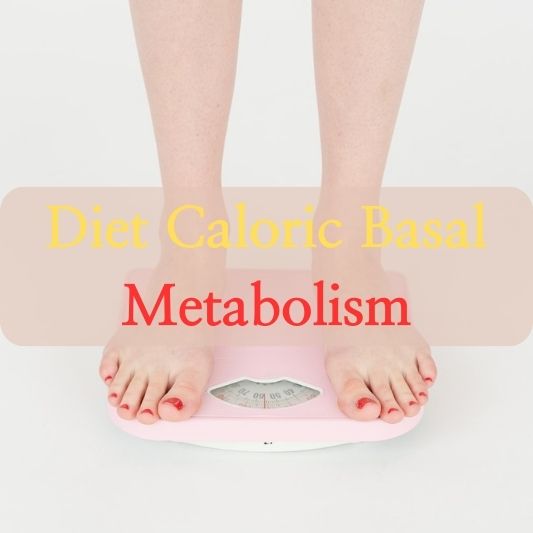Let’s look at the diet caloric basal metabolism. Dieting is an essential element of maintaining a healthy lifestyle and achieving your desired weight. However, when embarking on a diet journey, understanding how many calories you should consume is crucial. In this article, we will explore the concept of “Diet Caloric Basal Metabolism.” Understanding this concept can be a stepping stone to starting a healthy and effective diet.

What is Diet Caloric Basal Metabolism?
Understanding the Concept of Diet Caloric Basal Metabolism
Diet Caloric Basal Metabolism refers to the minimum amount of calories our bodies need to function while at rest. It represents the energy required to sustain basic bodily functions under stable conditions.
Calculating Caloric Basal Metabolism
There are several methods to calculate Caloric Basal Metabolism. Two prominent methods include the Harris-Benedict Formula and the Mifflin-St Jeor Equation. These formulas consider an individual’s level of physical activity and target weight to determine their basal metabolic rate.
The Harris-Benedict Formula
The Harris-Benedict Formula is a useful method for calculating Diet Caloric Basal Metabolism. The formula is as follows: For men:
Basal Metabolic Rate (kcal/day) = 88.362 + (13.397 × weight) + (4.799 × height, cm) – (5.677 × age) For women:
Basal Metabolic Rate (kcal/day) = 447.593 + (9.247 × weight) + (3.098 × height, cm) – (4.330 × age) This formula allows individuals to calculate their basal metabolic rate.
The Role of Caloric Basal Metabolism in Dieting
Relevance to Weight Management
In dieting, Caloric Basal Metabolism plays a pivotal role. Consuming calories beyond your basal metabolic rate leads to weight gain, while staying below it results in weight loss.
Establishing the Right Diet Plan
Understanding Caloric Basal Metabolism empowers individuals to create suitable diet plans. It involves calculating the calorie intake needed to reach or maintain a target weight and devising meal plans accordingly.
Considerations Regarding Dieting and Basal Metabolism
Physical Activity Level
An individual’s physical activity level significantly influences Caloric Basal Metabolism. Those who engage in vigorous physical activities require more calories.
Age and Gender
Age and gender also impact Caloric Basal Metabolism. As people age, their basal metabolic rate tends to decrease, and there can be differences between males and females.
Utilizing Diet Caloric Basal Metabolism
Restricting Caloric Intake
Limiting calorie consumption strategically, below your Basal Metabolic Rate, is a key approach in dieting. This can facilitate weight loss.
Balancing Nutrients
While considering Caloric Basal Metabolism, it’s crucial to maintain a balanced intake of nutrients. Adequate consumption of essential nutrients is necessary.
Tips for Dieting Success
Consistent Monitoring
Dieting requires consistent monitoring. Observing calorie intake and weight changes helps in making necessary adjustments to your plan.
Seeking Professional Guidance
For complex diet plans or when dealing with health issues, seeking assistance from a nutritionist or healthcare expert is advisable.
Conclusion
Understanding Diet Caloric Basal Metabolism is the first step toward healthy weight loss. Knowing your Basal Metabolic Rate and creating an appropriate diet plan based on this knowledge can contribute to maintaining good health and achieving your desired weight. Consistent effort and relying on accurate information can lead to dieting success.
Frequently Asked Questions
Q1: How do you calculate Caloric Basal Metabolism?
A1: Caloric Basal Metabolism can be calculated using formulas like the Harris-Benedict Formula or the Mifflin-St Jeor Equation, which take into account an individual’s physical activity level and target weight.
Q2: Why is Caloric Basal Metabolism important in dieting?
A2: Understanding Caloric Basal Metabolism helps determine the right calorie intake for effective weight management.
Q3: How does physical activity level affect Caloric Basal Metabolism?
A3: People with higher levels of physical activity require more calories, while those with lower activity levels may have a reduced Basal Metabolic Rate.
Q4: How can I restrict calories during dieting?
A4: To restrict calorie intake, aim to consume fewer calories than your calculated Basal Metabolic Rate.
Q5: Can I diet without professional guidance?
A5: Simple diet plans can be self-managed, but for complex diets or health concerns, seeking guidance from a nutritionist or healthcare expert is recommended.
Find out the price of diet supplements on iHub!
Find out the side effects of polycosanol!
